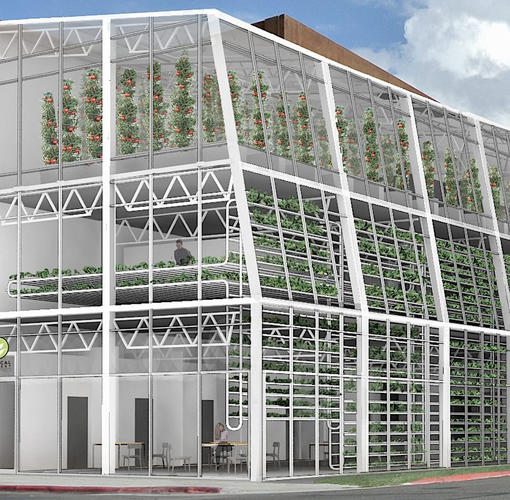Regular readers here know how much I love urban farming. Good Earth Plant Company employee Dawn Weatherford (thank you, Dawn!) tipped me off to one of the most exciting urban farming project I’ve ever seen and I wanted to share it with you.
The startup company Vertical Harvest plans to turn an old industrial building in Jackson, Wyoming into a huge vertical farm. It will use a hydroponic system to grow vegetables like microgreens and tomatoes. The photos and description of what the company intends to do are eye-popping.
The city of Jackson is partnering with Vertical Harvest to make this happen. The city owns the land and building. The players worked together for several years to make sure the project wouldn’t use more energy growing tomatoes than trucking them in from Mexico.
This is exactly why the project is so worthwhile and so newsworthy. It is also why I am so enthusiastic about urban farming. One of the most important things every one of us can do in our daily lives to support sustainability is buy our food – and everything else, really – closer to home.
In 1990, the U.S. imported $5 billion worth of fruits and vegetables. Now we import $18 billion worth, led by Mexico, Canada, Chile and China.
Strawberries grown in Santiago, Chile aren’t any different than the strawberries grown in El Centro. But the strawberries have a much longer trip from the field to your local grocery store. El Centro is 110 miles from San Diego. Santiago, Chile is over 4,700 miles away. That trip takes a lot of fuel to run the cargo ships and delivery trucks. Cut out that trip and you conserve a lot of fossil fuel plus keep it from spewing into the air. Sobering to think about, isn’t it?
This is true for all of the goods we consume. The closer to home, the more eco-friendly. It also means a boost to our local economy. It’s a small change we can all make that adds up to a lot.
The next time you’re in the produce department of your grocery store, check and see where those grapefruit or berries came from. If you can choose something grown in the U.S., do it. Even better, get your produce at one of the dozens of farmer’s markets in San Diego. Need help finding one? Here’s a list provided by the San Diego County Farm Bureau. You really have no excuse. You might even get to know some of your neighbors.

